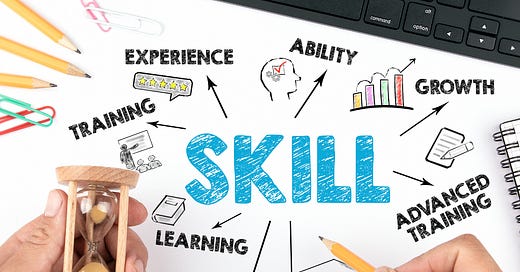A New Era for Organizations (Special Edition)
Shifting organizations and the rise of skill-based talent models
In recent years, organizations have begun shifting their focus from rigid job descriptions to dynamic, skill-based talent models. This approach prioritizes the unique abilities of individuals and builds adaptable teams capable of addressing challenges in real time.
The move away from traditional job-based structures is driven by the need for organizational agility, innovation, and resilience in the face of disruption. Research highlights that many critical outcomes such as fostering diversity, equity, and inclusion, and enhancing employee engagement are more effectively achieved when skills, not roles, take center stage.
Why Skills Matter More Than Ever
The traditional method of assigning tasks based on job hierarchies often limits flexibility and creativity. Companies require a more adaptive approach to remain competitive. According to Deloitte, skill-based talent strategies improve workforce productivity, increase innovation, and create a more engaging employee experience.
A growing emphasis on professional skills like communication, collaboration, leadership, and emotional intelligence underscores this shift.
Platforms like Udemy Business report a surge in interest in these areas, with topics such as coaching (up 177% year-over-year), team-building (up 150%), and resilience (up 101%) seeing significant growth.
This focus is especially critical as organizations navigate the disruptions of generative AI, automation, and technological transformation. Leaders are called to ensure their teams are not only reskilled but also aligned with a purpose that drives productivity and innovation.
The Power of Skill Mapping
Skill-based organizations operate more effectively when they leverage tools like skill mapping. By creating a comprehensive inventory of team members' abilities, organizations unlock hidden potential and foster growth.
Gallup’s research shows disengaged employees cost the global economy $8.8 trillion annually in lost productivity. Skill mapping addresses this issue by actively involving employees in their development, thereby enhancing engagement and retention.
Practical Steps for Skill Mapping:
Start Conversations: During performance reviews or team meetings, ask employees about untapped skills or areas where they’d like to grow.
Visualize the Data: Use tools like a skills matrix or mapping software to document and analyze the team’s strengths.
Align Skills to Goals: Match individual capabilities with organizational objectives to build agile, high-performing teams.
Diversity and Inclusion Through Skills
A skill-based model also supports diversity, equity, and inclusion efforts. In a Glassdoor survey, 76% of job seekers indicated that a diverse workforce is a crucial factor in evaluating potential employers. However, the benefits of diversity are only realized when paired with inclusion. Stefanie Johnson, Director of the Doerr Institute for New Leaders, stated, "You only see the benefit of diversity when you have inclusion."
Skill mapping helps leaders create inclusive environments by identifying and valuing diverse contributions, ensuring all voices are heard, and leveraging the full potential of the workforce.
Organizations that fail to invest in skill development risk falling behind. Leaders must embrace skill-based models not as a trend but as a necessity. By focusing on individual capabilities and fostering growth, they will build resilient teams prepared for the challenges ahead.
As McKinsey emphasizes, effective leadership connects teams with purpose, and purpose-driven teams are the cornerstone of organizational success.
What is Skill Mapping?
It’s a strategic approach and process of identifying, visualizing, and analyzing the skills within your team to optimize performance, foster growth, and align individual capabilities with organizational goals.
Steps to Skill Mapping
Assess Current Skills
Identify Gaps and Opportunities
Create a Skills Matrix
Develop Action Plans
Review and Update Regularly
Ask these questions
What skills do you feel most confident using?
Are there skills you’ve developed outside of work that we might leverage?
What areas would you like to grow into?
Are there opportunities you’d like to explore within the team?
By integrating skill mapping into your team strategy, you’ll cultivate a workforce that is not only more engaged but also better equipped to meet the demands of the future.



